February 18, 2025
100 Books for Algorithmic Trading Professionals – Part 1: Foundational Concepts
By Axon Trade Team
This article is part of the "100 Books for Algorithmic Trading Professionals" series prepared by the Axon Trade team. Read other parts here:
Part 1: Foundations of Algorithmic Trading
Part 2: Math & Statistics for Trading
Part 3: Coding & Tools
Part 4: AI & Machine Learning in Trading
Part 5: Portfolio Optimization & Risk Management
Part 6: Case Studies and Real-World Stories
Part 7: Trading Psychology
Intro
Algorithmic trading is built on data, strategy, and precision. To help traders and researchers deepen their knowledge, we’ve assembled a collection of key books that break down the mechanics of quantitative finance. Each article in this series highlights insights from essential works, offering a structured approach to learning from experts in the field.
The first part, Foundational Concepts, covers the core principles that every trader should know. These books explore market structure, risk management, system development, and statistical methods that underpin algorithmic trading. By sharing key takeaways, we encourage a more engaged approach to learning—one that moves beyond theory and into practical application.
Quantitative Trading: Algorithms, Analytics, Data, Models, Optimization
Author: Ernest P. Chan
Published: 2021
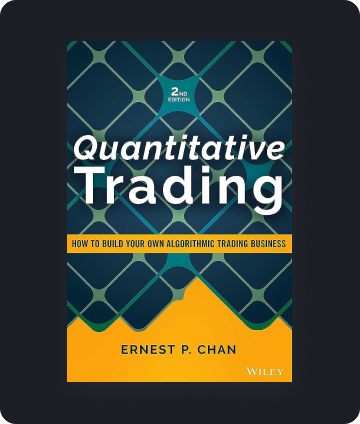
This second edition focuses on quantitative trading strategies for building or improving algorithmic trading systems. It includes backtesting examples in Python and R, parameter optimization techniques using machine learning, and guidance on selecting traders and advisors.
Designed for retail traders and investors, the book offers actionable insights for creating trading businesses or exploring careers in institutional finance. Updated with case studies and practical applications, it provides a strong foundation in both traditional and modern trading approaches.
High-Frequency Trading: A Practical Guide to Algorithmic Strategies and Trading Systems
Author: Irene Aldridge
Published: 2013
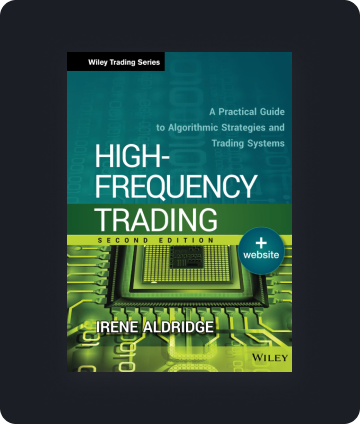
This updated edition provides a detailed overview of HFT, focusing on quantitative trading strategies, portfolio management techniques, and tools for building HFT systems. It also covers risk management, market dynamics, and evaluating system performance.
Written by Irene Aldridge, the book integrates recent research and technological advancements to offer practical insights for institutional and individual traders. A companion website includes sample strategies for download and testing.
Building Winning Algorithmic Trading Systems
Author: Kevin J. Davey
Published: 2014
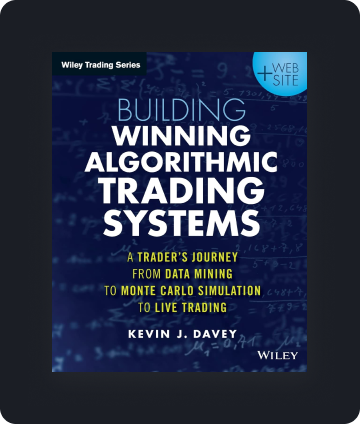
Kevin J. Davey shares his approach to creating and testing algorithmic trading systems that deliver strong performance, with practical examples and tools. The book guides readers through generating, validating, and implementing strategies, while covering allocation adjustments and exit rules.
A companion website includes tools like Davey’s Monte Carlo simulator to automate and test ideas. Designed for traders seeking to move beyond discretionary approaches, this book offers a framework for adapting systems to statistical trends and evolving market data.
Trading and Exchanges: Market Microstructure for Practitioners
Author: Larry Harris
Published: 2002
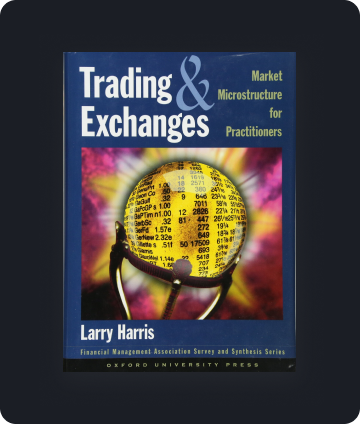
Larry Harris explores the mechanics of trading, market participants, and the rules governing financial marketplaces. Topics include investors, brokers, arbitrageurs, exchanges, ECNs, and market orders, along with detailed coverage of auctions, block trades, and insider trading.
The book also examines trading priorities, program trades, and speculative strategies, providing a practical guide to the structures and practices that shape modern markets. Designed for practitioners, it delivers essential insights into market microstructure.
The Science of Algorithmic Trading and Portfolio Management
Author: Robert Kissell
Published: 2013
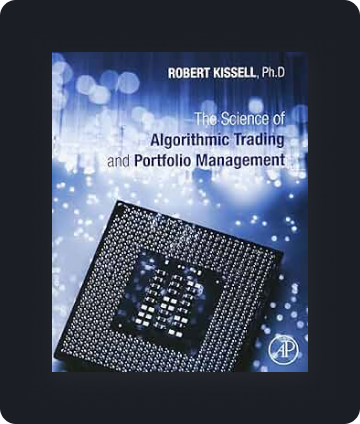
Robert Kissell provides an in-depth look into algorithmic trading and portfolio management, highlighting techniques for building and testing trading algorithms across various asset classes. The book addresses market impact analysis, risk management, and performance assessment, offering tools to implement effective electronic trading systems.
Key topics include market structure, pricing dynamics, and interactions among participants like traders and brokers. Advanced modeling techniques, portfolio management strategies, and quant factors are covered, supported by real-world examples, data sets, and supplementary exercises.
Systematic Trading: A Unique New Method for Designing Trading and Investing Systems
Author: Robert Carver
Published: 2015
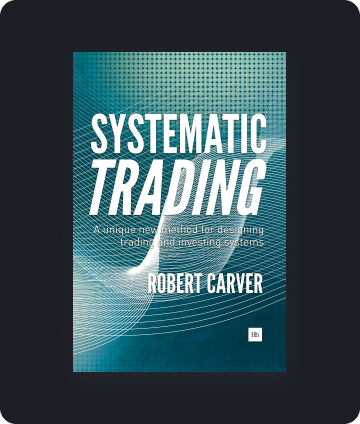
Robert Carver explores systematic trading, providing a step-by-step framework for designing and executing trading systems across multiple asset classes, including equities, bonds, forex, and commodities. The book emphasizes practical strategies for creating trading rules, managing position sizing, and avoiding common pitfalls in decision-making.
With insights drawn from hedge fund strategies and financial theory, the book offers tools to make trading safer and more effective. Readers will learn to mitigate risks such as over-optimism and excessive trading while building a systemized approach to financial decision-making.
Trading Systems and Methods
Author: Perry J. Kaufman
Published: 2013
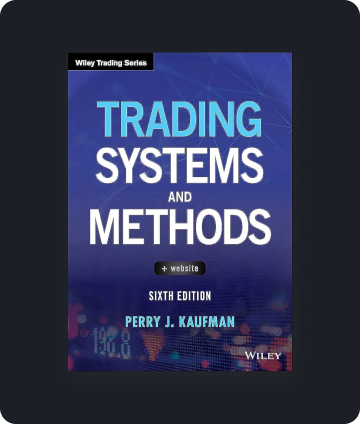
The fifth edition of Trading Systems and Methods by Perry J. Kaufman offers comprehensive insights into designing and analyzing trading systems. It includes updates on key areas such as trend analysis, momentum, risk management, arbitrage, and statistical techniques. This edition provides traders with the tools to create and compare trading systems tailored to various market conditions.
With detailed examples and practical applications, the book combines fundamental concepts with advanced strategies, highlighting similarities and differences among methods. It also includes access to supplementary online resources, such as spreadsheets and programs, for a deeper exploration of trading system development.
Trend Following: How to Make a Fortune in Bull, Bear, and Black Swan Markets
Author: Michael W. Covel
Published: 2017
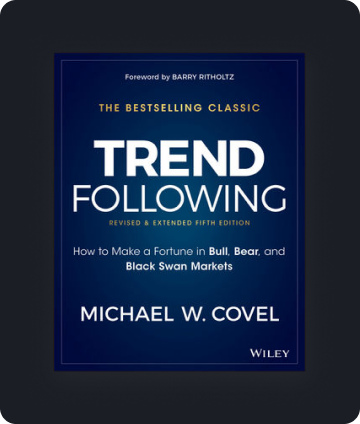
Trend Following by Michael Covel explores the principles of a trading strategy that thrives in bull, bear, and black swan markets. It examines the philosophy, rules, and systems behind trend trading, offering insights from successful traders who have profited from this method. The book ties behavioral finance to market dynamics and presents data-driven evidence on how trend following works in various market conditions.
This updated edition features new interviews and research, expanding on how traders can apply these strategies in modern markets. It emphasizes a disciplined, rules-based approach to trading, avoiding predictions and focusing on clear decision-making heuristics for sustainable profits.
Algorithmic Trading and DMA: An introduction to direct access trading strategies
Author: Barry Johnson
Published: 2010
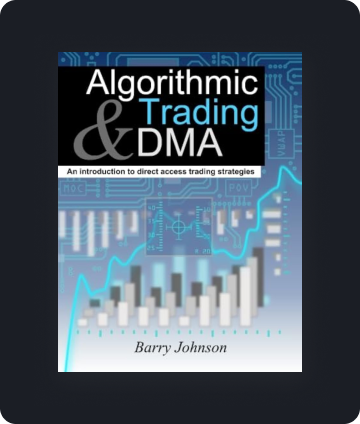
Barry Johnson’s Algorithmic Trading and DMA provides a comprehensive guide to algorithmic trading and Direct Market Access (DMA), focusing on institutional-sized orders. It details the mechanics of market microstructure and introduces different types of order execution, such as limit, stop, and iceberg, with examples for practical understanding.
The book also examines trading algorithms like TWAP, VWAP, and Adaptive Shortfall, their impact on transaction costs, and applications across major asset classes, including equities and derivatives. It includes insights on implementing trading strategies, handling news and data mining, and offers extensive appendices covering global market overviews.
Algorithmic Trading: A Practitioner’s Guide
Author: Jeffrey M Bacidore
Published: 2020
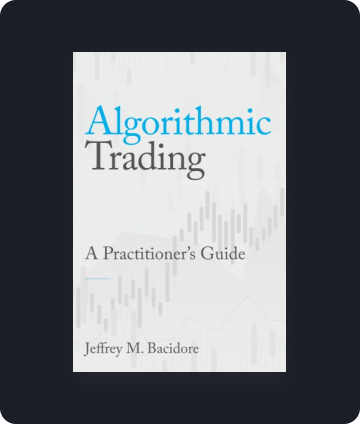
Jeffrey M Bacidore’s Algorithmic Trading: A Practitioner’s Guide explores the evolution of algorithmic trading from niche tools to widely used systems in various asset classes, including cryptocurrencies. It provides insights for portfolio managers and traders on how algorithms are applied in real-world scenarios.
The book covers single-order algorithms like VWAP and TWAP, multi-order strategies such as Pairs Trading, smart routers, and performance measurement techniques. It also addresses cost models, market benchmarks, and tools like "smart limit" and "dark aggregators," offering a practical resource for understanding and optimizing algorithmic trading processes.
Learn Algorithmic Trading
Author: Sourav Ghosh, Sebastien Donadio
Published: 2019
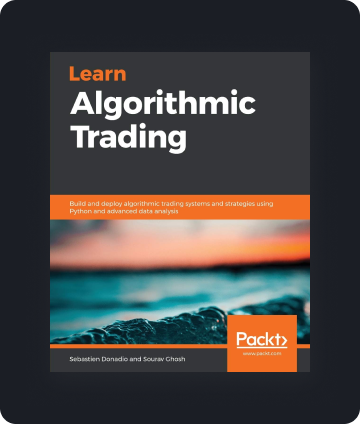
The book provides an in-depth exploration of algorithmic trading, covering the essential components of creating and running automated trading systems. It offers a practical approach to designing, building, and analyzing trading strategies, including signals based on mean reversion, trend analysis, and economic releases. Key concepts such as risk management, backtesting, and statistical arbitrage are explained with actionable examples, guiding readers toward developing fully functional trading bots.
The content is structured to introduce foundational knowledge, move into advanced topics like machine learning in trading, and culminate in implementing automated systems in live markets. Readers will also learn to connect to trading exchanges, adapt to market changes, and analyze financial data effectively, making it suitable for engineers, traders, and financial analysts seeking a comprehensive guide to algorithmic trading.
Algorithmic Trading: Winning Strategies and Their Rationale
Author: Ernest P. Chan
Published: 2013
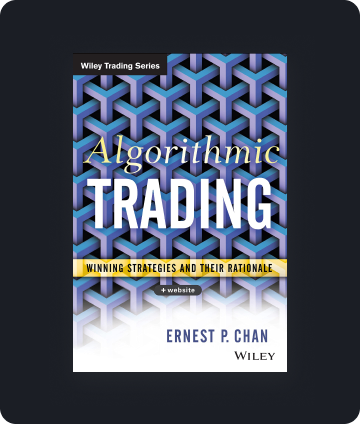
The book focuses on practical algorithmic trading strategies, showcasing real-world examples like mean reversion and momentum. It covers their development, testing, coding, and implementation, addressing challenges in strategy design and risk management. Concepts are explained step-by-step, offering actionable insights for traders.
Readers gain a deeper understanding of strategy performance, regime changes, and market behavior, making it a resource for creating trading systems and improving decision-making. The detailed approach bridges the gap between theory and application, catering to professionals and retail traders alike.
Algorithmic Trading: Questions and Answers (Advanced Topics in Quantitative Trading)
Author: Dr. Venice Trex
Published: 2023
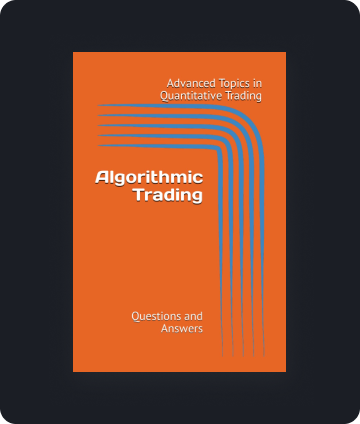
This resource addresses common questions about algorithmic trading, offering clear explanations of strategies, market mechanics, and ethical considerations. It provides practical knowledge for traders, covering foundational concepts and advanced machine learning applications.
Designed to bridge gaps in understanding, the text supports professional growth, interview preparation, and real-world application. Its accessible format caters to both newcomers and experienced practitioners, making it a valuable guide for navigating algorithmic trading challenges.
Quantitative Finance: Interview Questions and Answers (Advanced Topics in Quantitative Trading)
Author: X.Y. Wang
Published: 2023
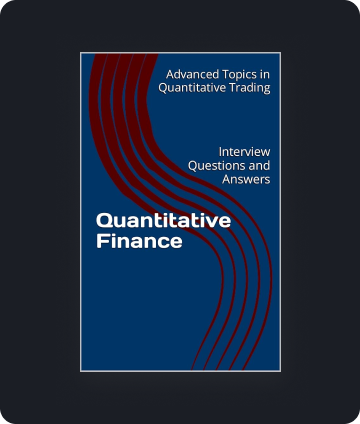
This book compiles over 100 quantitative finance interview questions, offering insights into both foundational concepts and advanced techniques. It serves as a preparation tool for analysts, professionals, and those exploring the field of quantitative finance, providing clear explanations to complex topics.
Focused on sharpening technical and analytical skills, it addresses key areas such as financial modeling, probability, and algorithmic trading. It’s designed to help readers build confidence and improve their readiness for competitive finance interviews.
ALGO TRADING CHEAT CODES: Techniques For Traders To Quickly And Efficiently Develop Better Algorithmic Trading Systems
Author: Kevin J Davey
Published: 2021
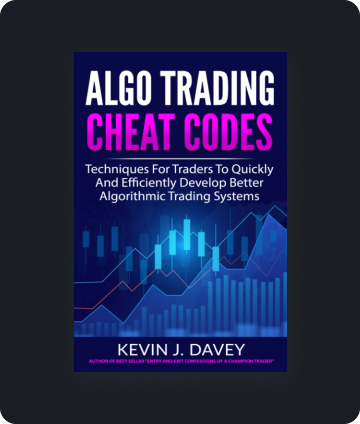
Kevin Davey’s book delivers practical strategies and insights drawn from millions of algorithmic trading strategy backtests. Featuring 57 actionable “cheat codes,” it provides traders with techniques to optimize risk-reward ratios, identify effective entry and exit points, and adapt strategies to varying market conditions.
The content is geared toward traders seeking a streamlined approach to developing and testing algo strategies. It addresses questions such as determining optimal bar sizes, incorporating macro trends, and managing trading uncertainty. The book offers a roadmap for leveraging proven techniques to enhance efficiency and profitability.
Algorithmic Investing
Author: Iurii Vovchenko, Eric Brierley
Published: 2023
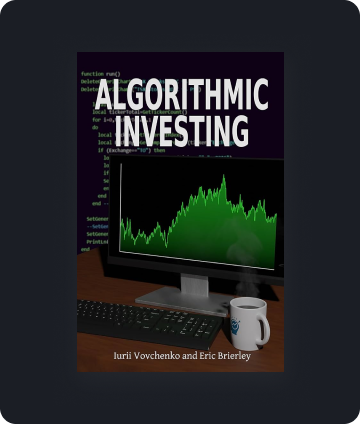
This book bridges the gap between software development and finance, offering modern algorithmic techniques for DIY stock investing. Designed for both beginners and experienced investors, it focuses on automating investment routines and improving decision-making through the use of scripting. Unlike other stock trading books, it emphasizes investing rather than trading, aiming to provide better portfolio control.
The content includes practical tools and techniques, utilizing the free scripting platform Tickernomics to analyze financial data. Readers will explore ways to save time, reduce manual effort, and make more informed decisions while learning strategies that cater to varied expertise levels.
Algorithmic Trading and Quantitative Strategies
Author: Raja Velu, Maxence Hardy, Daniel Nehren
Published: 2020
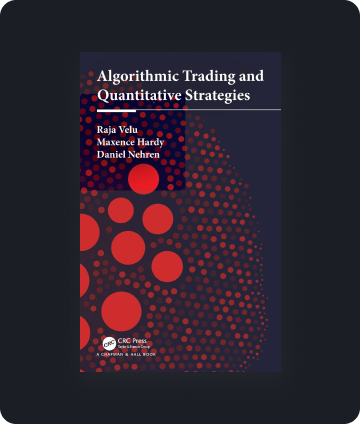
This book delves into the intersection of algorithmic trading and quantitative strategies, combining empirical modeling with hands-on approaches. It explores topics like market structure, quantitative microstructure models, execution algorithms, and the market impact of trading. By incorporating machine learning, portfolio management, and sentiment analytics, it addresses the evolving landscape of quantitative finance.
The authors provide practical guidance, supported by a GitHub repository containing datasets and Jupyter notebooks for interactive learning. With detailed discussions on trading strategies and the infrastructure required for large-scale implementation, the book serves as a comprehensive resource for students and professionals in finance and data science.
The Quant Trader’s Handbook: A Complete Guide to Algorithmic Trading Strategies and Techniques
Author: Josh Luberisse
Published: 2023
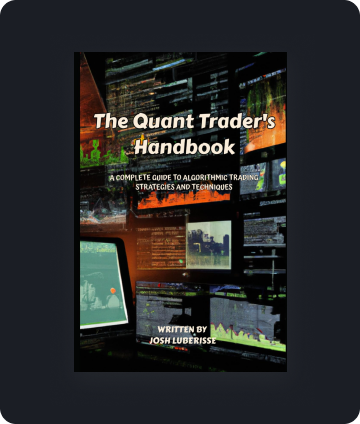
The Quant Trader’s Handbook provides a detailed exploration of algorithmic trading strategies, offering insights into the evolution of trading from early electronic systems to modern high-frequency trading methods. Covering topics such as popular trading techniques, data analysis, and system design, it equips readers with both foundational and advanced knowledge of quantitative finance.
This guide also touches on regulatory compliance and highlights the contributions of leading firms like Renaissance Technologies and Two Sigma. With illustrative examples and a focus on practical applications, the book aims to serve both beginners and professionals looking to deepen their understanding of algorithmic trading.
Introduction To Algo Trading: How Retail Traders Can Successfully Compete With Professional Traders
Author: Kevin J. Davey
Published: 2018
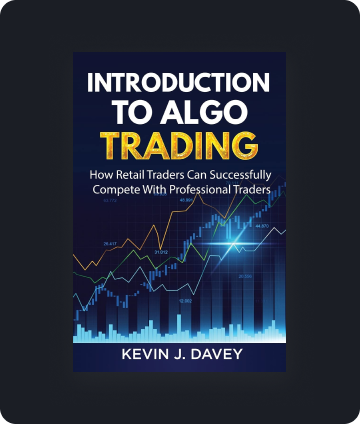
This introduction to algorithmic trading offers a clear overview tailored for retail traders seeking to compete in markets traditionally dominated by professionals. The book provides guidance on understanding the advantages and challenges of algorithmic trading, selecting platforms, and developing straightforward strategies.
It also includes tips for launching into algo trading, covering essential steps such as platform setup and strategy implementation. Designed for those new to the field, it aims to simplify the transition into automated trading with practical advice and a roadmap for getting started effectively.
Dark Pools and High-Frequency Trading: A Deep Dive into Modern Markets
Author: Jordan Hale
Published: 2024

Dark pools and high-frequency trading (HFT) play a significant role in shaping financial markets by enabling private transactions and ultra-fast execution. This text examines their impact on market transparency and liquidity, detailing issues such as market manipulation, flash crashes, and regulatory reforms like MiFID II. Real-world examples, including the 2010 Flash Crash and Barclays LX controversy, provide insights into the risks and ethical dilemmas these mechanisms present.
Key topics include tools for risk management, real-time analytics, and strategies for navigating volatile markets. The influence of emerging technologies like AI, machine learning, and blockchain on trading is also explored, offering a forward-looking perspective. Whether for institutional or retail traders, the analysis provides a deep understanding of the systems driving modern financial markets.
Conclusion
Building a strong foundation in algorithmic trading starts with the right knowledge. The books covered in this series offer essential insights into market mechanics, strategy development, and risk management—key areas for anyone looking to refine their approach. While no single book holds all the answers, each contributes to a deeper perspective on how trading systems evolve and operate.
For those looking to apply these concepts in real trading environments, Axon Trade offers FIX API for trading and real-time market data with normalized symbology and deep order book visibility. Our order management tools help traders track and execute strategies across multiple exchanges, while position management solutions provide a clear view of portfolio performance. By combining theoretical knowledge with practical tools, traders can make informed decisions and refine their strategies over time.
As this series continues, we’ll explore more specialized topics, including high-frequency trading and advanced quantitative methods. Each article will focus on key takeaways that traders can integrate into their own workflows.
Looking for more insights? Continue exploring the series:
